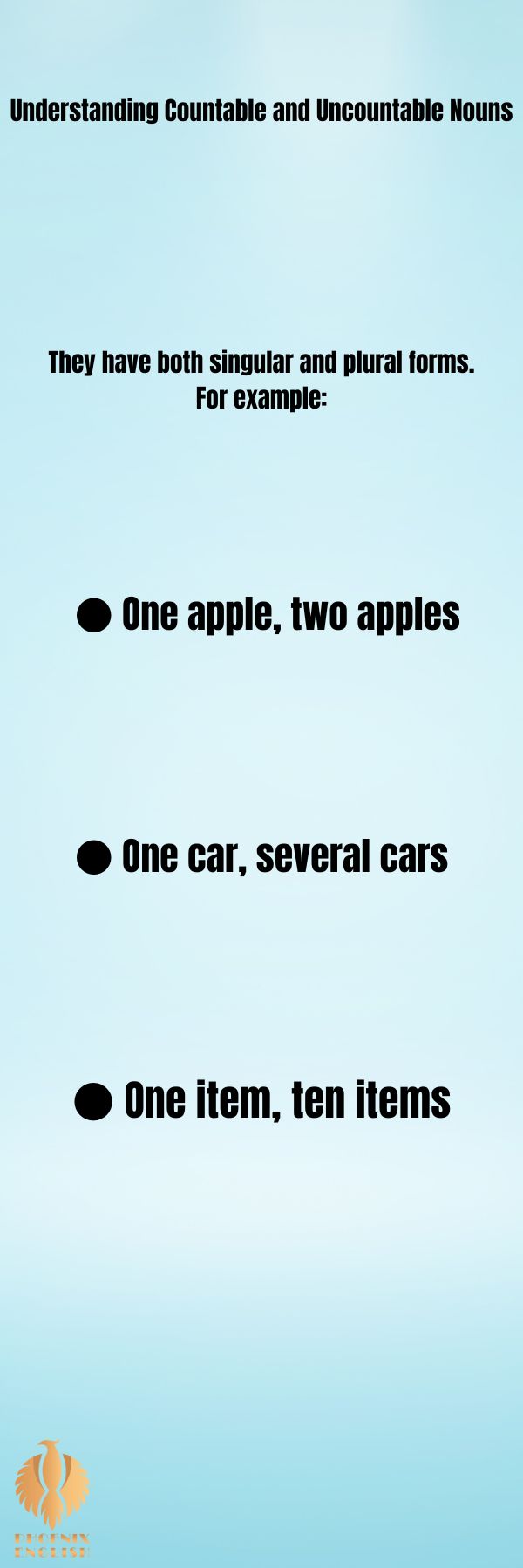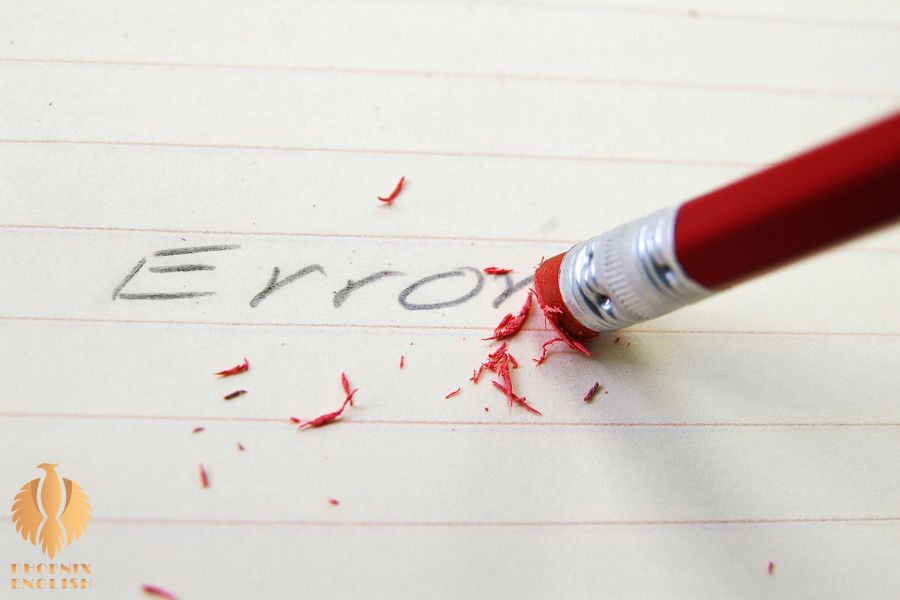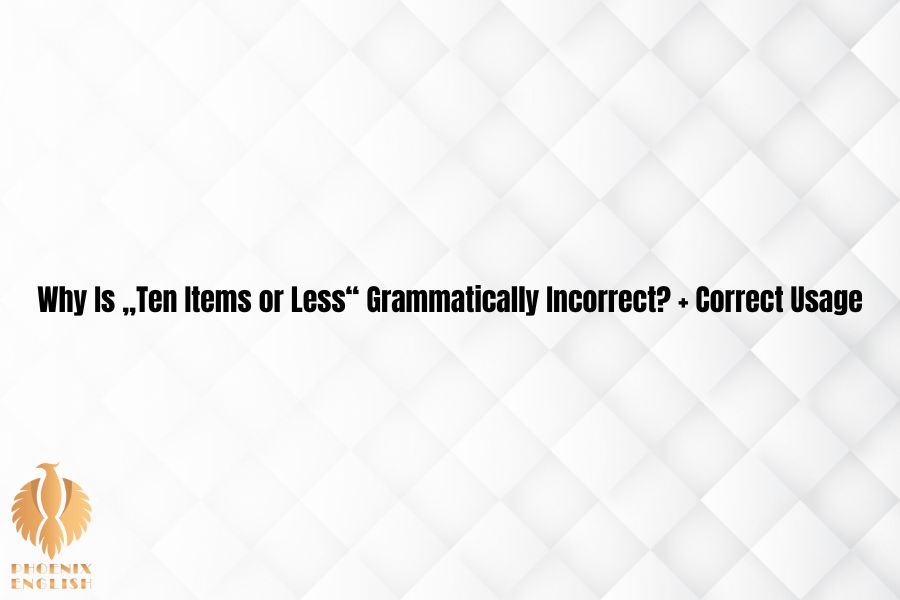The phrase “Ten Items or Less” is grammatically incorrect. The correct expression should be “Ten Items or Fewer.”
This distinction is important because “less” is used for uncountable quantities, while “fewer” is used for countable items. Since “items” are countable entities, the correct usage demands “fewer.”

To elaborate, in English, “less” generally applies to things that cannot be counted as individual units, such as sugar, water, or time.
For instance, we say “less sugar” or “less time.” On the other hand, “fewer” refers to items that can be counted, such as apples, cars, or indeed, items in a shopping cart.
Therefore, when we are specifying a limit on countable products, “fewer” is the appropriate choice to adhere to grammatical rules.
While “Ten Items or Less” has become commonplace in everyday language and signage, many linguists and grammarians advocate for the correct distinction to enhance clarity in communication.
This debate highlights the evolving nature of language, where often colloquial usage can diverge from traditional grammatical standards. However, understanding and utilizing “fewer” in this context is essential for mastering correct English.
In this article, we will delve deeper into the grammatical rules behind “less” and “fewer,” provide examples of both terms in use, and explore strategies for remembering when to use each word.
By the end, you will have a clearer understanding of grammatical precision and the importance of language in effective communication.
Let’s explore why “fewer” is not just grammatically correct, but also crucial for clear and accurate expression in the English language.
You might also enjoy: Top 100 Commonly Used Verbs That Start With D [2024]
Understanding Countable and Uncountable Nouns

To understand why ten items or less is incorrect, I first need to delve into the concept of countable and uncountable nouns. Countable Nouns are nouns that can be counted as individual elements or units. They have both singular and plural forms.
For example:
● One apple, two apples
● One car, several cars
● One item, ten items
Uncountable Nouns (also known as mass nouns) refer to substances or concepts that cannot be divided into separate elements. These nouns do not have a plural form and cannot be counted individually.
For example:
● Water
● Rice
● Information
In this context, items are clearly countable. I can have one item, two items, or ten items. Therefore, the word fewer, which is used with countable nouns, should be employed instead of less.
The Rules for Using Less and Fewer
The distinction between less and fewer follows a simple rule:
● Use fewer with countable nouns: Fewer apples, fewer cars, fewer items.
● Use less with uncountable nouns: Less water, less rice, less information.
Knowing these guidelines, the grocery shop sign ought to say Ten Items or Fewer, since items are measurable. This grammar rule is broken and usage of the word less in this context is improper.
Common Misunderstandings and Misuses

The misuse of less instead of fewer is widespread and often goes unnoticed in everyday language. This misuse has become so common that many people do not recognize it as an error.
Examples include:
● Less calories instead of fewer calories
● Less people instead of fewer people
● Less mistakes instead of fewer mistakes
These phrases are incorrect because calories, people, and mistakes are all countable nouns. The correct phrases should be fewer.
- Standard Definition
– Explanation: “Less” is used with uncountable nouns, while “fewer” is reserved for countable nouns.
– Example: “You have less water in your bottle,” (uncountable) vs. “You have fewer bottles of water,” (countable).
- Countable vs. Uncountable
– Explanation: Items in a shopping context can be counted individually (e.g., apples, cans).
– Example: “You can take fewer apples,” makes sense because apples are countable.
- Grammatical Rule
– Explanation: The general grammatical rule dictates the use of “fewer” for countable items.
– Example: “There are fewer students in this class than in that one.”
- Common Misuse
– Explanation: “Less” has become a common misuse in phrases where “fewer” should be employed.
– Example: A sign saying “10 Items or Less” misuses “less” instead of the correct “fewer.”
- Importance of Precision
– Explanation: Correct usage enhances clarity in communication, particularly in writing.
– Example: “We have less sugar” could be ambiguous if not specifying the quantity; “We have fewer than five bags of sugar” is clearer.
- Linguistic Debate
– Explanation: While some argue language evolves, observing grammatical rules provides structure and clarity.
– Example: Many grammar scholars uphold the use of “fewer” in formal discussions to emphasize accuracy.
- Formal Writing Standards
– Explanation: Adhering to grammatical rules, like using “fewer,” is essential in formal writing for professionalism.
– Example: A research paper stating, “There are fewer errors in the data,” reflects proper usage expected in academic settings.
- Language Evolution
– Explanation: Language changes over time, but understanding traditional rules aids effective communication.
– Example: Even as slang develops, knowing proper grammar helps maintain credibility.
- Everyday Examples
– Explanation: Other phrases illustrate the distinction—common misuse emphasizes the need for awareness.
– Example: “There are fewer days left in the month” vs. “There is less time to finish the project,” clarifying countable versus uncountable.
- Educational Value
– Explanation: Teaching the difference fosters grammatical skills and contributes to better writing.
– Example: Grammar lessons in school that emphasize “fewer” can improve students’ writing overall.
- Clarity in Advertising
– Explanation: Correct phrases can positively influence customer perception.
– Example: “Fewer items allowed in this line” communicates clear policy versus the vague “less.”
- Legal Implications
– Explanation: Precise language prevents misunderstandings in formal documentation.
– Example: Legal documents that mislabel quantities (using “less” instead of “fewer”) can lead to disputes.
- Social Context
– Explanation: Misusing terminology can reflect a lack of attention to detail in social settings.
– Example: A person stating, “There were less people at the event” might come off as less educated.
- Contrast with Numeric Values
– Explanation: Expressing numeric values like “ten” emphasizes that a countable noun is referenced.
– Example: Saying, “You can take fewer than ten items” directly applies the correct term due to the numeric context.
- Discussions in Grammar
– Explanation: Engaging in grammatical discussions raises awareness of language intricacies.
– Example: Grammar clubs discussing “fewer” vs. “less” enhance members’ understanding.
- Historical Usage
– Explanation: Reviewing historical usage can provide context for current grammatical standards.
– Example: Many classic texts consistently show the use of “fewer” in a countable context.
- Influence of Education
– Explanation: Grade school education usually emphasizes correct usage to promote proficiency.
– Example: Students often learn that “fewer” applies when listing quantities, like “fewer books.”
- Impact on Writing
– Explanation: Writers misusing “less” may unintentionally mislead or confuse their audience.
– Example: An article stating “less errors” can undermine the author’s credibility.
- Modern Media Influence
– Explanation: The prevalence of common misphrases in media can lead to the acceptance of incorrect usage.
– Example: Commercials that say “less” instead of “fewer” can misinform audiences.
- Emotional Resonance
– Explanation: Precise language fosters better relationships in customer service contexts.
– Example: A cashier stating “You have fewer items than allowed” is clearer than using “less.”
- Memorable Quotes
– Explanation: Linguists and authority figures emphasize “fewer” for authority and correctness.
– Example: A famous linguist might say, “Fewer issues lead to fewer misunderstandings,” reinforcing correct usage.
- Language as a Reflection of Culture
– Explanation: Language reflects cultural norms; using English accurately embodies care for communication.
– Example: A group using precise language fosters respect and understanding in professional interactions.
- Reducing Ambiguity
– Explanation: Correct word choice reduces ambiguity, leading to clearer instructions.
– Example: “This lane is for ten items or fewer” provides unambiguous instructions for customers.
- Building Vocabulary
– Explanation: Learning the difference encourages a richer vocabulary and structural understanding.
– Example: Readers who understand these terms can utilize a broader range of descriptive language.
- Everyday Conversations
– Explanation: Using “fewer” leads to more accurate discussions about quantities in everyday life.
– Example: “I bought fewer groceries than last week” allows for a specific quantity reference.
- Argument in Rhetoric
– Explanation: Clarity strengthens arguments and persuasive writing.
– Example: A persuasive essay stating “There are fewer options available” is more impactful.
- Competition in Education
– Explanation: Misuse can disadvantage students unfamiliar with grammatical standards.
– Example: A student using “less” in academic essays might receive lower grades than peers who use “fewer.”
- Role of Editors
– Explanation: Editors often catch these grammatical mistakes, emphasizing the need for carefulness.
– Example: A newspaper that corrects “less people” to “fewer people” reflects professional editing standards.
- Classroom Discussions
– Explanation: Discussing these rules in classrooms sets a foundation for future language use.
– Example: Lessons emphasizing correct usage prepare students for professional communication.
- International Standards
– Explanation: International English standards endorse correct usage in professional contexts.
– Example: A global professional standard document might emphasize “fewer risks” in projects.
- Inconsistencies in Learning
– Explanation: Casual usage can cause confusion for students when learning grammar rules.
– Example: A student might think “less” applies universally due to prevalent misuse.
- Word Origin
– Explanation: Understanding the etymology can clarify the applications of “less” and “fewer.”
– Example: “Fewer” comes from a root implying quantification, assisting understanding of countability.
- Media Representation
– Explanation: Few media outlets enforce grammatical precision, leading to misconceptions.
– Example: Television programs often showcase characters using incorrect grammar, inadvertently influencing viewers.
- Engaging Youth
– Explanation: Teaching young people about “fewer” fosters a lifelong appreciation for language.
– Example: Schools that prioritize grammar lead students to use more precise language throughout life.
- Potential for Change
– Explanation: While language evolves, maintaining grammatical standards ensures effective communication.
– Example: Modern authors who retain traditional grammar improve their works’ readability and credibility.
- Basic Reading Skills
– Explanation: Correct usage forms a fundamental part of reading comprehension abilities.
– Example: Students who learn “fewer” vs. “less” often read more critically and effectively.
- Integration in Curriculum
– Explanation: Many educational systems include grammar studies to combat misconceptions.
– Example: Curriculums that highlight “fewer” and “less” can reduce confusion early on.
- The Role of Dictionaries
– Explanation: Dictionaries clarify distinctions, often noting the difference between countable and uncountable nouns.
– Example: Entries for “fewer” and “less” explain their usage clearly, aiding in proper application.
- Self-Editing Skills
– Explanation: Developing self-editing skills can reduce misuse of terms like “less.”
– Example: A writer who practices editing for grammatical accuracy improves the quality of their work.
- Empirical Research
– Explanation: Studies reveal that clear communication boosts relationships in various domains.
– Example: Businesses that enforce clear language guidelines tend to have better customer relationships.
- Social Media Impact
– Explanation: The rise of casual language on social platforms can blur the lines of correct usage.
– Example: Posts that say “less likes” instead of “fewer likes” can attract critique from language purists.
- Importance of Consistency
– Explanation: Consistent use of correct terms strengthens written and verbal communications.
– Example: A company maintaining correct grammar in all communication builds trust and professionalism.
- Influence of Technology
– Explanation: Grammar correction tools can help reinforce the importance of proper usage.
– Example: Tools that underline “fewer” in a sentence prompt users to reflect on their word choice.
- Phonetic Similarities
– Explanation: The phonetic similarity between “less” and “fewer” leads some to confuse the two.
– Example: “Fewer” can be mispronounced or misunderstood in rapid speech, blurring the lines.
- Learning Framework
– Explanation: Understanding these distinctions aids learners to grasp more complex grammatical principles.
– Example: Mastering foundational concepts like “fewer” sets the groundwork for advanced grammar.
- Language and Identity
– Explanation: Mastery of language nuances contributes to an individual’s identity as a communicator.
– Example: People who use language accurately are often perceived as more educated and credible.
- Grammatical Advocacy
– Explanation: Advocating for grammatical correctness fosters a precision culture in language.
– Example: Language organizations that promote accurate grammar help shape public awareness.
- Analysis of Errors
– Explanation: Analyzing common errors helps understand and prevent future mistakes.
– Example: Workshops focused on common grammatical pitfalls reinforce learning and memory.
- Applicability Beyond Signage
– Explanation: The principle extends beyond store signage into various everyday contexts.
– Example: Misuse can occur in casual conversation, where “less” is incorrectly applied to countable items.
- Lifelong Learning
– Explanation: Encouraging continual language learning enriches personal expression skills.
– Example: Engaging with language resources throughout life improves vocabulary and grammar.
You might also enjoy:Looking Forward To Seeing You: Grammar + Examples[2025]
Why the Distinction Matters

While some might argue that the distinction between less and fewer is pedantic, maintaining this grammatical rule is important for several reasons:
1. Clarity and Precision
Using the correct term ensures clarity and precision in communication. When I say fewer items, it is immediately clear that I am referring to countable objects.
2. Consistency in Language
Grammar rules provide a consistent framework for language. Following these rules helps maintain consistency, making it easier for everyone to understand and use the language correctly.
3. Educational Standards
Adhering to proper grammar is important in educational contexts. Teaching and reinforcing the correct usage of less and fewer helps students develop strong language skills.
4. Professionalism
Correct grammar conveys professionalism and meticulousness. When used correctly, grammar communicates expertise and credibility in both writing and speaking.
Historical Context and Evolution of Language
Language is not static; it evolves over time, adapting to cultural shifts and changes in usage patterns. The misuse of less in place of fewer has become so common that it might eventually be accepted as standard usage.
This phenomenon highlights how language evolves through repeated informal use, especially in spoken contexts where rigid adherence to grammatical rules often gives way to convenience and familiarity. Over the centuries, many grammatical rules have been bent or broken due to widespread colloquial usage, leading to new standards in written language.
The phrase ten items or less has likely persisted due to its frequent use in everyday conversation, marketing, and signage, where informality often prevails over strict grammatical rules.
This commonality reinforces its usage and familiarity, making the incorrect form seem acceptable to the general public.
Additionally, the ease and brevity of saying less instead of fewer contribute to its endurance in spoken language. Over time, colloquial usage can significantly influence written language, leading to the widespread acceptance of incorrect forms.
Historical examples of this phenomenon abound, such as the shift from thou to you or the merging of the subjunctive mood with indicative forms in English.
Language purists may resist these changes, but the dynamic nature of language often means that repeated usage by the majority eventually shapes what is considered correct.
As of now, the rule distinguishing less from fewer remains an important aspect of proper grammar, especially in formal writing and educational contexts. However, the evolving nature of language suggests that continued misuse could eventually lead to a shift in the accepted standards.
Understanding this context allows us to appreciate the fluidity of language while still striving to maintain clarity and precision in our communication.
Correcting the Error

To avoid the ten items or less error, I should always use fewer when referring to countable nouns. Here are some examples to use it correctly:
● There are fewer cars on the road today.
● I made fewer mistakes on this test.
● We need fewer volunteers for this event.
By consciously applying this rule, I can improve my grammar and ensure clear, precise communication.
You might also enjoy:Emersion Vs Immersion: Meaning, Differences, and Examples
The Role of Education in Addressing the Error
When it comes to addressing and fixing common grammatical problems, education is essential.
The distinction between less and fewer should be emphasized by educators and teachers from a young age.
Early instruction is crucial because it forms the foundation for students’ language skills.
By incorporating this rule into grammar lessons and providing ample opportunities for practice, students can internalize the correct usage of less and fewer.
In classrooms, teachers can use a variety of methods to reinforce this rule. Interactive activities, such as sentence construction exercises and grammar games, can make learning engaging and memorable.
Regular quizzes and writing assignments that focus on the correct usage of less and fewer can also help solidify students understanding.
Additionally, teachers can provide examples from literature, media, and everyday contexts to illustrate the importance of proper grammar.
Instructional materials like grammar manuals, textbooks, and online resources play a significant role in reinforcing correct grammar usage.
These materials should consistently highlight the proper use of less and fewer, providing clear explanations and numerous examples.
Exercises and practice tests included in these resources can give students the chance to apply what they have learned in various contexts.
Moreover, teachers can encourage students to be vigilant about their own language use and to seek feedback on their writing.
Peer review sessions and writing workshops can be particularly effective, as they allow students to learn from each other and recognize common mistakes.
By fostering a classroom environment where proper grammar is valued and practiced regularly, teachers can help reduce the prevalence of this common error.
Beyond the classroom, continued emphasis on correct grammar in higher education and professional development can further reinforce these lessons.
Universities and professional training programs should maintain high standards for grammar in both written and spoken communication.
By integrating proper grammar usage into the broader educational journey, educators can ensure that students carry these skills into their personal and professional lives.
Teachers can significantly contribute to reducing the frequency of the ten items or less error by making the distinction between less and fewer a consistent part of grammar instruction.
By doing so, they not only help students develop strong language skills but also promote clarity and precision in communication across various contexts.
The Influence of Media and Popular Culture

Language usage is significantly shaped by popular culture and the media. Errors such as ten items or less can become entrenched when bad grammar is frequently used in TV shows, movies, advertisements, and other media forms. This pervasive exposure can normalize incorrect usage, making it seem acceptable or even correct to the audience.
Given the influential role media and popular culture play in shaping public perceptions and behaviors, it is crucial for content creators to be mindful of their language choices.
Media makers should aim for linguistic accuracy in their work to counter the spread of grammatical errors. Writers, producers, and editors have a responsibility to uphold high standards of grammar in their scripts, subtitles, and dialogues.
By doing so, they not only maintain the integrity of the language but also educate their audience subtly and effectively. When viewers repeatedly encounter correct grammar usage in their favorite shows or ads, they are more likely to adopt these standards in their own speech and writing.
For example, TV shows and movies that are widely consumed by millions have the power to influence language trends.
If these media consistently model proper grammar, they set a positive example for their audiences. Similarly, advertisements and public service announcements that use correct grammar can reinforce these norms in everyday communication.
Media creators can also take advantage of their platforms to highlight common
grammatical mistakes and educate the public, perhaps through engaging and humorous content that underscores the importance of correct usage.
The role of social media cannot be overlooked. Influencers, bloggers, and content creators on platforms like YouTube, Instagram, and TikTok reach vast audiences and can impact language use trends. By prioritizing correct grammar in their posts, captions, and videos, they contribute to a culture that values proper language use.
Educational content that explains common errors, including the ten items or less mistake, can also be particularly effective on these platforms.
Promoting linguistic accuracy in media and popular culture is not just about pedantry; it is about fostering clear and effective communication.
By modeling proper grammar, media creators can help set an example for their viewers and promote a more grammatically correct culture. This, in turn, benefits society by enhancing understanding and reducing miscommunication.
The Role of Context
Explanation: The context in which words are used often dictates their correct application. Recognizing when to apply “less” versus “fewer” can depend heavily on the surrounding nouns.
Example: In a sentence like, “We need less information,” information is uncountable, but in, “We need fewer reports,” reports are countable.
The Impact of Globalization on Language
Explanation: As English spreads globally, various forms and usages can emerge, leading to differences in grammatical interpretations.
Example: Variants of English may adopt colloquial phrases like “less” in contexts where “fewer” is traditionally correct.
Community Engagement
Explanation: Encouraging community members to engage in discussions about grammar fosters awareness and improves language use.
Example: Local workshops or events focused on language can help highlight common errors and the importance of precise grammar.
Role of Technology in Language Learning
Explanation: Language learning apps and online courses can reinforce proper grammar rules through interactive exercises and quizzes.
Example: Programs that gamify grammar practice make it easier and more engaging for learners to differentiate between “less” and “fewer.”
Emotional Impact of Language Use
Explanation: The choice of words can affect the emotional tone of communication, influencing how messages are received.
Example: Using “fewer” may convey a sense of order and clarity, whereas “less” might introduce ambiguity, impacting the listener’s understanding.
The Function of Grammar in Non-Verbal Communication
Explanation: Grammar is not just about words; it can also extend to punctuation and the structure of information presented.
Example: Proper grammar helps structure sentences in a way that aids comprehension, akin to how visuals support verbal content in infographics.
Regional Variations in Language Use
Explanation: Different regions may exhibit variations in language use, including the “less” vs. “fewer” distinction.
Example: Some dialects may favor “less” in more informal contexts regardless of grammatical rules.
Influence of Academic Writing
Explanation: Academic writing often upholds stricter grammatical standards than informal speech, highlighting the necessity for precision.
Example: Research papers and essays must adhere to rigorous grammatical structures to convey credibility and authority.
Importance of Peer Review
Explanation: Peer reviews in both academic settings and professional writing help to catch grammatical errors and enhance writing quality.
Example: Having colleagues review documents fosters an environment of grammatical precision and reduces the incidence of misuse.
Utilizing Visual Aids
Explanation: Infographics or visual guidelines can effectively illustrate the rules and differences between “less” and “fewer.”
Example: A visual chart mapping out countable and uncountable nouns can help learners quickly grasp the concepts.
Advanced Grammar Concepts
Explanation: Exploring more complex grammar principles, such as modifiers or quantifiers, can provide deeper insights into the nuances of language usage.
Example: Teaching students about qualitative and quantitative descriptions can enhance their understanding of when to use “less” vs. “fewer.”
Impact of Literature on Language Standards
Explanation: Classic and contemporary literature can serve as examples of correct grammar usage and highlight the evolution of language.
Example: Analyzing works by esteemed authors can showcase the effective use of “fewer” and help reinforce its proper application.
Recognition of Language Learners’ Challenges
Explanation: Non-native speakers often face additional hurdles in mastering these distinctions due to varying complexities in their first languages.
Example: Tailoring grammar education to consider diverse backgrounds can improve understanding and reduce misuse among language learners.
Cultural Significance of Language
Explanation: Language is a reflection of cultural identity and standards, and variations can carry social implications.
Example: Upholding grammatical accuracy can be viewed as a form of respect for the language and the community it represents.
Advocacy Groups for Language Preservation
Explanation: Organizations dedicated to preserving language standards can help promote correct usage and educate the public.
Example: Groups focused on linguistic advocacy may create campaigns highlighting the importance of using “fewer” appropriately.
You Might Also Enjoy: Top 60 Most Common Simple Sentences In English
Practical Tips for Correct Usage
To avoid making the ten items or fewer error and similar mistakes, I can follow these practical tips:
1. Understand the Rule:
Remember that fewer is used with countable nouns and less is used with uncountable nouns.
2. Practice Regularly:

Regular practice can help reinforce the rule. I can write sentences using fewer and less correctly to build my confidence.
3. Read and Listen:
Paying attention to well-written articles, books, and speeches can help me internalize proper grammar usage.
4. Seek Feedback:
Asking for feedback from teachers, peers, or language experts can help
I identify and correct errors in my language use.
5. Use Grammar Resources:
Online grammar checkers, grammar books, and educational
websites can provide valuable guidance and practice exercises.
Broader Implications of Proper Grammar
Proper grammar extends beyond the ten items or less error. It influences many aspects of communication and has broader implications for society:
1. Professional Communication:
In professional settings, proper grammar is essential for
clear and effective communication. It reflects attention to detail and professionalism.
2. Academic Success:
Proficiency in grammar is essential for academic achievement. They enable students to write clearly, construct logical arguments, and convey ideas
effectively.
3. Social Perceptions:

People often judge others based on their language use. Proper
grammar can enhance credibility and respect, while frequent errors can lead to negative perceptions.
4. Preservation of Language:
Maintaining grammatical rules helps preserve the structure
and integrity of the language. It ensures that language remains a reliable tool for
communication across generations.
Common Misconceptions About Grammar Rules
There are several misconceptions about grammar rules that contribute to errors like ten items or less. Addressing these misconceptions can help clarify the importance of proper usage:
1. Grammar Rules Are Arbitrary Some people believe that grammar rules are arbitrary and unimportant. However, these rules are based on logical principles that ensure clarity and consistency in communication.
2. Language Is Constantly Evolving While it is true that language evolves, this does not mean that all grammatical rules are irrelevant. Certain rules, like the distinction between less and fewer, remain important for clear communication.
3. Informal Speech Doesn’t Require Proper Grammar Even in informal speech, using proper grammar can enhance clarity and avoid misunderstandings.
You might also enjoy:Too Cute Meaning Vs To Cute (To Vs Too) + Examples
Conclusion
To sum up, the expression ten items or less lacks proper grammar since less belongs with uncountable nouns, whereas fewer is associated with countable nouns, such as items.
It’s crucial to comprehend and follow this guideline in order to communicate clearly and precisely.
Correct grammar conveys professionalism, consideration for the written word, and attention to detail. Common grammatical errors can be less common if I practice correct speech, educate them, and support accurate language in media and popular culture.
Stressing the proper usage of fewer and less goes beyond merely adhering to the norms for their own sake. It is about ensuring that my communication is as effective and clear as possible.
As language learners, educators, and communicators, we all have a role to play in maintaining the integrity of the English language. By doing so, we contribute to a society where language remains a powerful tool for connection and understanding.

Hi, welcome to my blog! My name is Omid and I am thrilled to have you here! I am an English language teacher with 12 years of experience and hold multiple international certifications (TESOL, IELTS, TOEFL, PTE, CELTA). Additionally, I hold a PhD in Applied Linguistics with a specialization in Teaching English as a Second Language (TESL), which fuels my passion for teaching English and assisting others in mastering the language. To me, nothing is more rewarding than helping individuals enhance their English language abilities through various methods. So, let’s embark on this journey of learning English together.




